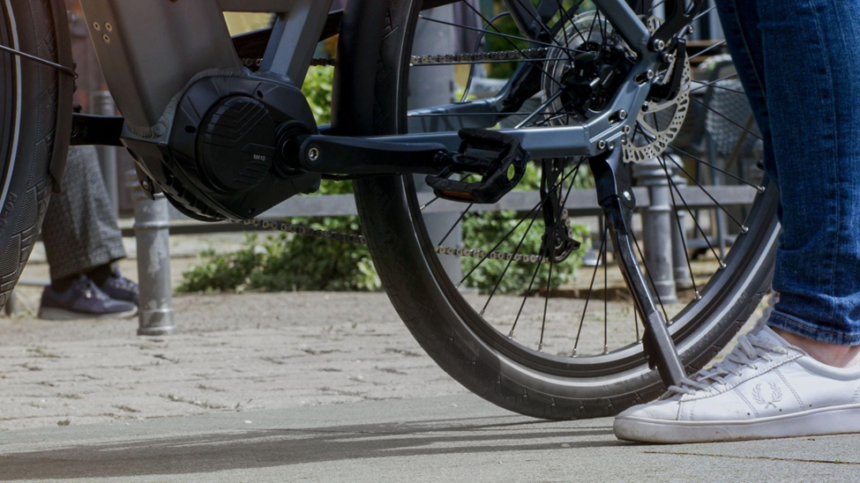Electric bikes, also known as ebikes, have gained popularity in recent years as a more sustainable and efficient alternative to traditional bicycles. E-bikes work by combining a traditional bike frame with an electric motor, battery, and controller. The motor provides power to the bike to assist with pedalling, making it easier and faster to ride.
Understanding how e-bikes work is important for anyone considering purchasing one. E-bikes have a variety of components that work together to provide a smooth and efficient ride. By learning about the technology behind e-bikes, individuals can make informed decisions about which type of e-bike is right for them.
Key Takeaways
- E-bikes combine a traditional bike frame with an electric motor, battery, and controller to provide power assistance to the rider.
- Understanding the technology behind e-bikes is important for making informed purchasing decisions.
- E-bikes offer a more sustainable and efficient alternative to traditional bicycles.
Understanding E-Bike Technology
Basic Components
An e-bike, also known as an electric bicycle, is a bicycle that is equipped with an electric motor that assists the rider’s pedalling. The basic components of an e-bike include the battery, motor, controller, and sensors. The battery is usually mounted on the frame of the bike and provides power to the motor. The motor is typically mounted on the bottom bracket or the rear wheel hub and provides assistance to the rider when pedalling. The controller is the brain of the e-bike and manages the flow of power from the battery to the motor. The sensors detect the rider’s pedal power, speed, and torque and send signals to the controller to adjust the level of assistance provided by the motor.
Operation
When the rider starts pedalling, the sensors detect the pedal power and send signals to the controller to activate the motor. The motor then provides assistance to the rider, making it easier to pedal and increasing the speed of the bike. The level of assistance provided by the motor can be adjusted using a control panel or a smartphone app. The rider can choose to ride the e-bike in pedal-assist mode, where the motor only provides assistance when the rider is pedalling, or in throttle mode, where the motor provides assistance without the need for pedalling.
E-Bike Systems
There are two main types of e-bike systems: hub motor systems and mid-drive systems. Hub motor systems have the motor mounted on the front or rear wheel hub and provide direct assistance to the wheel. Mid-drive systems have the motor mounted on the bottom bracket and provide assistance to the pedals. Mid-drive systems are more efficient and provide better

performance, especially on hills and rough terrain.
Environmental Impact of E-Bikes
E-bikes have a significantly lower environmental impact compared to traditional vehicles. This section will explore the environmental benefits of e-bikes, emission reduction, and case studies.
Environmental Benefits
E-bikes are a more sustainable and eco-friendly mode of transportation. They have a lower carbon footprint and produce fewer emissions compared to cars and other vehicles. E-bikes do not emit harmful pollutants, such as carbon monoxide and nitrogen oxide, which contribute to air pollution and climate change. They also have a lower noise pollution level compared to traditional vehicles, making them a quieter and more peaceful mode of transportation.
Emission Reduction
E-bikes are an effective way to reduce greenhouse gas emissions. According to a study conducted by the European Cyclists Federation, e-bikes create 2.5 to 5 grams of carbon dioxide per mile as compared to 150 grams per mile for an electric car. E-bikes are also more energy-efficient, with an average of 100-150 watts of power required to travel 20 miles, compared to a car that requires 10,000 watts of power to travel the same distance.
Case Studies
A study conducted by the University of Tennessee found that replacing car trips with e-bike trips could reduce carbon dioxide emissions by up to 12%. Another study conducted in the Netherlands found that e-bikes could replace up to 15% of car trips, resulting in a significant reduction in greenhouse gas emissions.
In addition, commuting by e-bike has become increasingly popular as a sustainable alternative to cars and public transportation. A study by Grundig Bike found that commuting by e-bike is a healthy and eco-friendly alternative to driving or using public transportation.

Challenges and Considerations
E-bikes have become increasingly popular due to their numerous advantages over traditional bicycles. However, there are several challenges and considerations that users and policymakers must take into account.
Battery Disposal
One challenge associated with e-bikes is the disposal of their batteries. Lithium-ion batteries, which are commonly used in e-bikes, are not biodegradable and can have harmful effects on the environment if not disposed of properly. Therefore, it is essential to recycle e-bike batteries to reduce their impact on the environment.
Charging Infrastructure
Another consideration is the availability of charging infrastructure. E-bike users must have access to charging stations to ensure that their bikes are charged and ready for use. Therefore, it is essential to have a reliable and well-distributed charging infrastructure to encourage the use of e-bikes.
Cycling Infrastructure Impact
The use of e-bikes can also have an impact on cycling infrastructure. E-bikes are faster than traditional bicycles and can cause conflicts with other cyclists and pedestrians. Therefore, it is essential to design cycling infrastructure that can accommodate e-bikes and ensure the safety of all road users.
Finally, policymakers must consider regulations and policies that govern the use of e-bikes. For example, in the UK, e-bikes are classified as electrically assisted pedal cycles (EAPCs) and are subject to specific regulations. Policymakers must ensure that e-bike regulations are clear and promote the safe use of e-bikes.

Conclusion
Electric bikes are a great alternative to traditional bicycles and motorbikes. They offer a convenient and eco-friendly way to get around, especially in urban areas. With advancements in technology, e-bikes are becoming more efficient, affordable, and versatile.
In conclusion, e-bikes work by using an electric motor to assist the rider’s pedalling. The motor is powered by a battery, which can be charged using a regular power outlet. The motor provides varying levels of assistance, depending on the type of e-bike and the desired level of exertion. Some e-bikes also come with a throttle, which allows the rider to control the speed without pedalling.
E-bikes come in various styles and designs, ranging from foldable commuter bikes to high-performance mountain bikes. They are also equipped with various features such as suspension, disc brakes, and LED lights. E-bikes are regulated by different laws in different countries, so it is important to check the local regulations before purchasing one.
Overall, e-bikes are a practical and fun way to get around. They offer a low-impact workout, reduce carbon emissions, and save money on transportation costs. With more people becoming aware of the benefits of e-bikes, it is likely that they will become even more popular in the future.
Frequently Asked Questions
What is the mechanism behind electric bikes assisting on hills?
Electric bikes are equipped with a motor that provides additional power when navigating uphill terrain. This motor, often located in the hub of the front or rear wheel, offers a boost to the rider’s pedalling efforts, making hill climbing more manageable.
In what manner do electric bikes recharge their batteries?
Electric bikes recharge their batteries through regenerative braking, which converts kinetic energy into electrical energy during deceleration. This process helps to extend the battery life and reduce the need for frequent charging.
Is pedalling still required when using an electric bike?
Yes, pedalling is still required when using an electric bike. The electric assistance complements the rider’s pedalling efforts, providing a smoother and more efficient cycling experience.
What are the common drawbacks associated with electric bicycles?
Common drawbacks associated with electric bicycles include their relatively higher initial cost compared to traditional bicycles, as well as the added weight due to the battery and motor components.
Can electric bikes regenerate power while riding?
Some electric bikes are equipped with regenerative braking systems that can convert kinetic energy into electrical energy during braking or coasting. However, not all electric bikes have this feature.
What does the experience of riding an electric bike feel like?
Riding an electric bike offers a seamless and enjoyable experience, with the electric assistance providing a smooth and effortless ride, particularly when tackling challenging terrain or longer distances.


